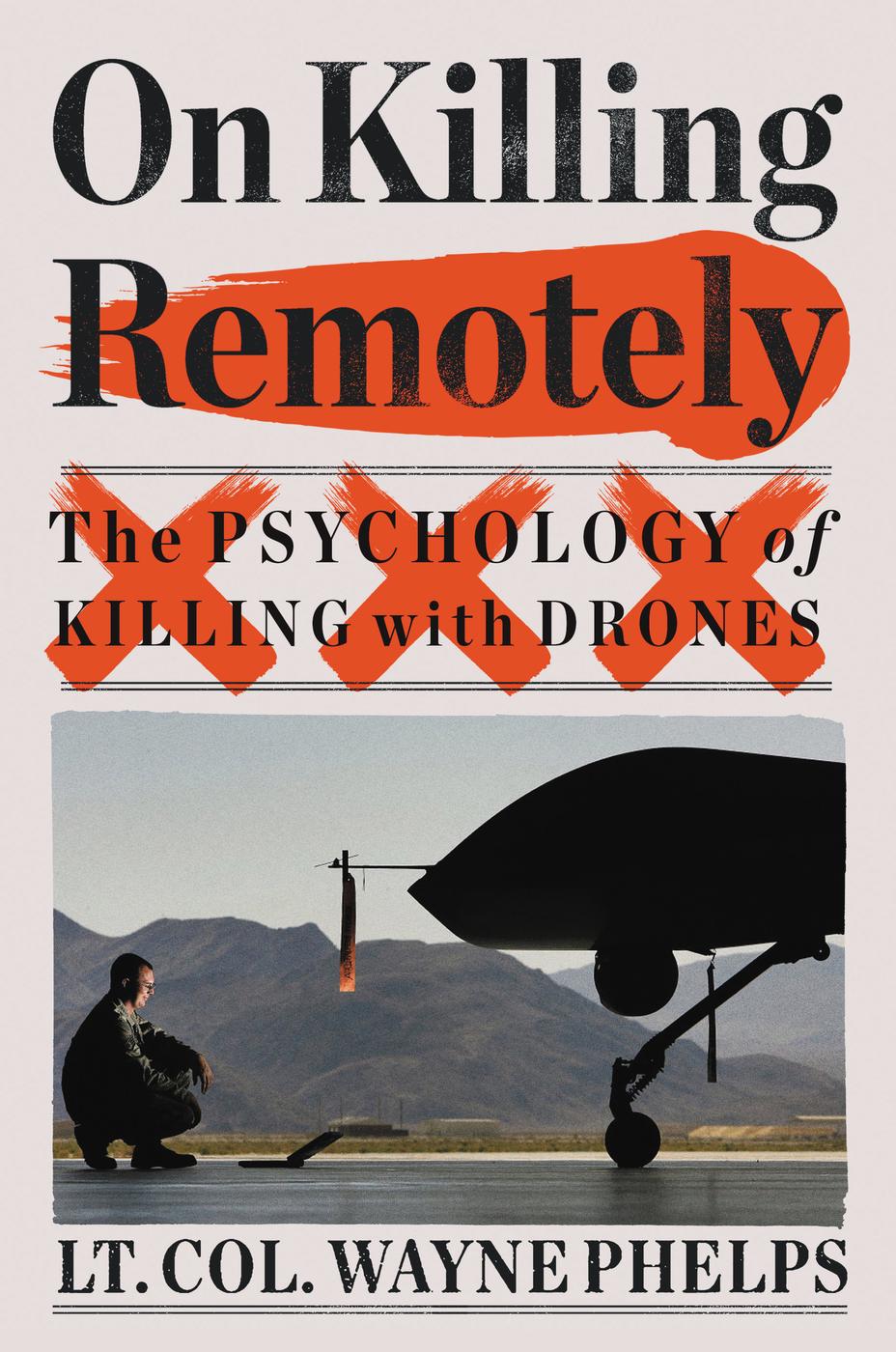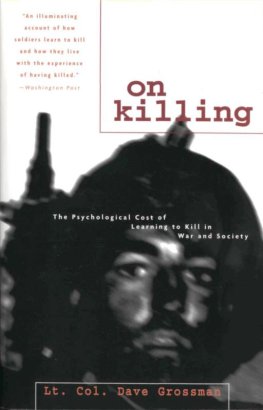
Copyright 2021 by Kenneth Wayne Phelps III
Hachette Book Group supports the right to free expression and the value of copyright.
The purpose of copyright is to encourage writers and artists to produce the creative works that enrich our culture.
The scanning, uploading, and distribution of this book without permission is a theft of the authors intellectual property. If you would like permission to use material from the book (other than for review purposes), please contact permissions@hbgusa.com. Thank you for your support of the authors rights.
Little, Brown and Company
Hachette Book Group
1290 Avenue of the Americas, New York, NY 10104
littlebrown.com
facebook.com/LittleBrownandCompany
twitter.com/LittleBrown
First ebook edition: May 2021
Little, Brown and Company is a division of Hachette Book Group, Inc. The Little, Brown name and logo are trademarks of Hachette Book Group, Inc.
The publisher is not responsible for websites (or their content) that are not owned by the publisher.
The Hachette Speakers Bureau provides a wide range of authors for speaking events. To find out more, go to hachettespeakersbureau.com or call (866) 376-6591.
ISBN 978-0-316-62827-3
Library of Congress Control Number: 2021936127
E3-20210421-NF-DA-ORI
To the unsung heroes fighting our wars remotely.
Explore book giveaways, sneak peeks, deals, and more.
Tap here to learn more.

A Predator Hunts for Bin Laden
Man taxes his ingenuity to be able to kill without running the risk of being killed.
Ardant du Picq, Battle Studies
Two months after the unexpected and horrific terrorist attacks on America on 9/11, I was deployed to a remote location in Pakistan as part of a conventional force of Marines. By December 2001, the situation had significantly changed, as we were joined by another team that relocated from Uzbekistan to Pakistan. This team, known as a launch and recovery element (LRE), brought armed Predators with them. The teams arrival allowed me to bear witness to an event that would alter the fabric of warfighting: the first armed remotely piloted aircraft, flown over Pakistan and Afghanistan by Air Force pilots in the parking lot of the CIA headquarters in Langley, Virginia.
I played no part in the Predators operations, but I became fascinated by the technology that enabled an aircrew to control an armed, remote-controlled airplane from the other side of the globe. I was enthralled by the very concept of it. The Predator was intriguing and the fact that it was armed was known only by a small circle of people at Big Safari, a U.S. Air Force test and rapid acquisition organization for special mission aircraft; General Atomics, the firm that developed the Predator and integrated the Hellfire missile; and the CIA.
The Predator program moved fast as a result of missed opportunities to kill Osama bin Laden. The rapid pace of the Predators development was attributable partly to it belonging to an Advanced Capability Technology Demonstration, which meant that it was able to circumvent some of the traditional acquisition hurdles. It also helped that General John Jumper, the commander of the U.S. Air Forces Air Combat Command and eventually the Air Forces seventeenth chief of staff, was a proponent of the Predator and pushed for it to be armed.
The chief pilot of the Predator team was an Air Force special operations helicopter pilot named Captain Scott Swanson. Swanson first got involved with the Predator in 1998. Shortly after joining the program, he led the flight operations team and deployed the Predator to the Balkans. The Predator wasnt armed, but did include a newly integrated laser designator capable of marking targets for laser-guided munitions. After the Balkans, Swanson continued to serve as Big Safaris deputy for an Air Force team embedded with General Atomics Aeronautical Systems Inc. in San Diego.
In September 2000, an unarmed Predator launch and recovery element deployed to Uzbekistan to search for Osama bin Laden in Afghanistan as the U.S. grew increasingly concerned about the escalation of Al Qaeda attacks on U.S. interests. The LRE in Uzbekistan prepared the aircraft for flight, launched the airplane, and then handed it off to the mission control element (MCE). Handoffs were enabled through the use of satellite communications embedded in the front of the aircraft and communication and coordination between the LRE and MCE. The MCE, located at an American facility on Ramstein Air Base in Germany, unbeknownst to the Germans at the time, then commanded the flight. When the mission was complete, the mission control element handed the aircraft back off to the launch and recovery element for landing, refueling, and maintenance.
Swanson deployed to Ramstein as part of what Big Safari coined the Summer Project. On two occasions during that deployment, Swanson spotted bin Laden in his camera. The first time was at an Al Qaeda training camp named Tarnak Farms. The crew of the unarmed Predator couldnt do anything except report the situation and wait for the appropriate authority to make the decision to launch a cruise missile or take other lethal action. Ultimately, cruise missiles didnt rain down on Tarnak Farms that day, and the opportunity passed. Bin Laden didnt resurface again for another decade.
The arrival of winter weather in 2000 prohibited the Predator from making the transit from Uzbekistan to Afghanistan over the Hindu Kush mountains and ended the Predators first deployment to Afghanistan. The program accelerated over the next year. The first test shot of a Hellfire missile from the aircraft occurred at Indian Springs, Nevada, in February 2001. By September 2001, Big Safari and General Atomics had integrated the Hellfire missile and everything required to return to Afghanistan to hunt for bin Laden and Al Qaeda. And just in time.
On September 12, 2001, a day after the attacks on the U.S., an Air Force cargo jet, one of the only aircraft allowed to fly in the U.S. that day, departed the West Coast bound for the East Coast with Swanson, his team, and their equipment on board. Then Swanson and team set up in the parking lot of CIA headquarters at Langley, Virginia. On September 18, 2001, Swanson and his team resumed Predator flights over Afghanistan, this timed armed with Hellfire missiles. The LRE was simultaneously established at the previous launch and recovery location in Uzbekistan and remained there until relocating to Pakistan.
Three weeks later, on October 7, 2001, while I watched Tomahawk cruise missiles launch toward Afghanistan from the Arabian Sea before going ashore to Pakistan, Swanson, along with his sensor operator Jeff Guay, secured their footnote in history as the first Predator crew to fire a Hellfire missile in combat. Swanson recalls the details of that evening:
At one point, we tracked a couple of vehicles with Mullah Omar [the leader of the Taliban] heading out of Kandahar. Corroborating intelligence confirmed that it was Omar and that he was on the move. We ended up following him to a compound probably fifty to twenty kilometers outside of town where they stopped and went inside a building. We were on-site, on target there, preparing to assist inbound strikers to hit the target when a dialogue started on chat amongst our mission manager, the Air Operations Center [AOC], and intelligence personnel about whether to strike the target with fighters and whether a building in the area was a mosque.










